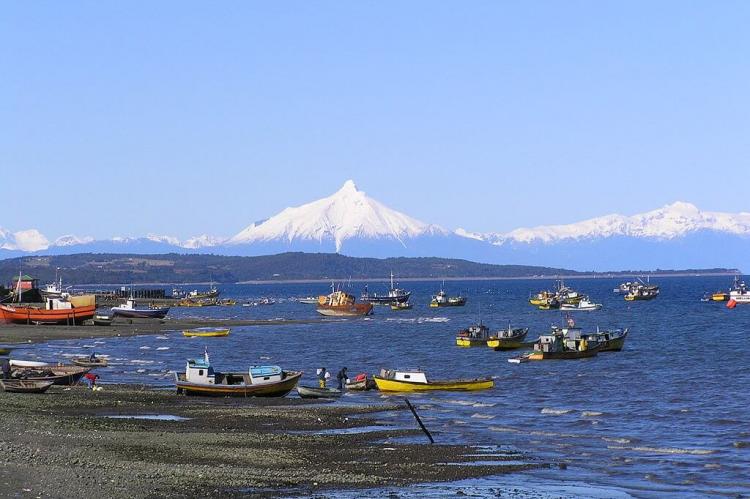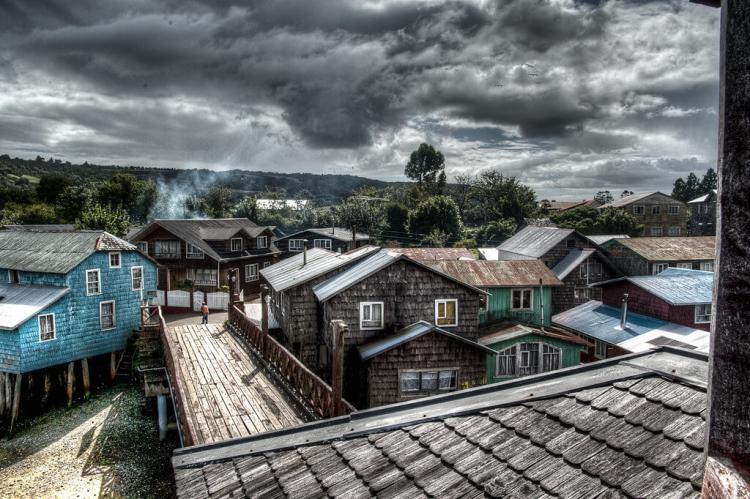Chiloé Archipelago: Chiloé Island (Chile)
Located in the Pacific Ocean, off the coast of the Los Lagos Region in southern Chile, Chiloé Island is the largest island of the Chiloé Archipelago. From pastoral landscapes to iconic wooden churches, Chiloé is known for its distinctive folklore, cuisine, and architecture.
Chiloé Archipelago
The Chiloé Archipelago (Archipiélago de Chiloé) is a group of islands lying off the coast of southern Chile in the Los Lagos Region. It is separated from mainland Chile by the Chacao Channel to the north, the Sea of Chiloé to the east, and the Gulf of Corcovado to the southeast.
The archipelago forms the Chiloé Province (except for the Desertores Islands in the east, which are part of the Palena Province). The main island is Chiloé Island (Isla Grande de Chiloé).
Chiloé is known for its distinctive folklore, mythology, cuisine, and unique architecture. In addition, the variety of potatoes most widely grown worldwide is indigenous to the islands.
According to archaeological discoveries in Monte Verde, the archipelago may have been populated as early as 12,000 to 11,800 BC, located less than 50 km (31 mi) north of the main island.
Chiloé's first ethnically identifiable inhabitants are believed to be the Chonos, a seafaring nomadic people. Sometime before the arrival of the Spaniards, the Cuncos, a coastal people, arrived from the mainland north of Chiloé and settled on the eastern shore of the Isla Grande, practicing horticulture and fishing.
The archipelago's original vegetation is the Valdivian temperate rainforest, a forest with a dense understory and a large diversity of plant species, including many mosses and ferns. The western and southern portions of the island are still covered mainly by the native forest.
Notable species include arrayán (Luma apiculata), roble (Nothofagus dombeyi), quila (Chusquea quila), Chilean rhubarb, and the avellano (Gevuina avellana). In addition, Fitzroya cupressoides and tepú (Tepualia stipularis) grow in the poorly drained soils of the Piuchén and Pirulil ranges.
Before the end of the Llanquihue glaciation, the southern parts of Chiloé Island constituted open landscapes. This changed around 12,500 years ago when the climate became warmer, and forests colonized the region. The upper portions of Cordillera del Piuchén, locally known as la Campaña, have Magellanic moorland vegetation.
The native fauna includes many birds, some endemic to the archipelago. Among land mammals, the largest is Darwin's fox (named as such because Charles Darwin was the first to collect a specimen on Isla San Pedro, Chiloé) and the pudú, a small deer.
Marine mammals include Commerson's dolphins and South American sea lions, which form colonies at rock outcrops close to the sea. Several whale species have been sighted around the island, notably blue whales and critically endangered southern right whales.
{"preview_thumbnail":"/sites/default/files/styles/video_embed_wysiwyg_preview/public/video_thumbnails/162150535.jpg?itok=rFSPYFOX","video_url":"https://vimeo.com/162150535","settings":{"responsive":1,"width":"854","height":"480","autoplay":0},"settings_summary":["Embedded Video (Responsive)."]}
Chiloé Island
Chiloé Island (Isla de Chiloé) is located in the Pacific Ocean, off the coast of the Los Lagos Region in southern Chile. Also known as Isla Grande de Chiloé, it is the largest island of the Chiloé Archipelago.
With 8,394 sq km (3,241 sq mi), the island is the second largest in Chile (after the Isla Grande de Tierra del Fuego), the largest island entirely within Chile and the fifth largest in South America.
The island is 190 km (118 mi) from north to south, averaging 55 - 65 km (34 - 40 mi) wide. The capital is Castro, on the east side of the island. The second largest town is Ancud, at the island's northwest corner.
Several smaller port towns are on the island's east side, such as Quellón, Dalcahue, and Chonchi. To the east of Chiloé Island lies the Sea of Chiloé, which contains most other islands in the archipelago.
The island is separated from the Chilean mainland by the 2-km-wide (1.2-mi-wide) Chacao Channel in the north. Consequently, most good harbors are located on the island's northern and eastern shores. The east coast is marked by a series of peninsulas and inlets, notably Estero de Castro, where the capital, Castro, is located.

Map of Region de la Isla de Chiloé, Chile
The western part of Chiloé Island, as well as the whole of Guafo Island, is hilly and covered by forests. The hills are subdivided into two north-south ranges, Piuchén and Pirulil, separated by the lakes Cucao and Huillinco. They contain the highest points in the archipelago and do not exceed 800 m (2,600 ft). Depressions in the western forest are occupied by numerous small lakes and bogs scattered across the landscape.
Situated in an area of heavy rainfall, the densely forested island is little developed. Most of the island's inhabitants (Chilotes) live in one of the island's port cities, Ancud or Castro (the island's oldest city, founded in 1567). Many Chilotes are engaged in agriculture (potatoes, grains), livestock raising (sheep, cattle), fishing, and lumbering.
Chilotan architecture is a unique style mainly restricted to Chiloe Island and nearby areas. In part because of its physical isolation from the rest of Chile and access to different materials, Chiloé has extraordinary architecture that differs most significantly from the typical Spanish colonial architecture.
The Spanish, who arrived in the 16th century, and Jesuit missionaries who followed, constructed hundreds of small wooden churches to bring Christianity to a pagan land; the result was a mixing of Catholicism and pagan beliefs. The use of flat wooden tiles as shingles became a staple in its architecture. Sixteen of these Churches of Chiloé remain and have been designated a UNESCO World Heritage Site.
The cuisine of Chiloé has its origin in pre-Hispanic traditions among native Chonos and Huilliches. Typical features of Chilote cuisine include earth ovens and asado barbecues. In addition, chilote cuisine makes extensive use of fish, shellfish and potatoes, of which plenty of varieties are growing in the archipelago's different islands.
Chiloé is a center of diversity of potatoes and the origin of most cultivated potatoes outside of the Andes, belonging to the subspecies Solanum tuberosum tuberosum.
Traditional cuisine includes curanto and pulmay. Curanto is a dish made from fish, clams (almejas), ribbed mussels (cholgas), giant barnacles (picorocos), meats and potatoes of Chiloé wrapped in leaves and cooked in a hole in the ground by hot stones. It can also be cooked in a pot over a bonfire, becoming pulmay.
Lamb is considered the most appreciated meat and is eaten and prepared as an asado, especially around Christmas and new year. Apple chicha (cider) is a standard alcoholic beverage. Other typical alcoholic beverages are murtado and licor de oro liqueurs.
{"preview_thumbnail":"/sites/default/files/styles/video_embed_wysiwyg_preview/public/video_thumbnails/45873031.jpg?itok=9UrOUU8I","video_url":"https://vimeo.com/45873031","settings":{"responsive":1,"width":"854","height":"480","autoplay":0},"settings_summary":["Embedded Video (Responsive)."]}





